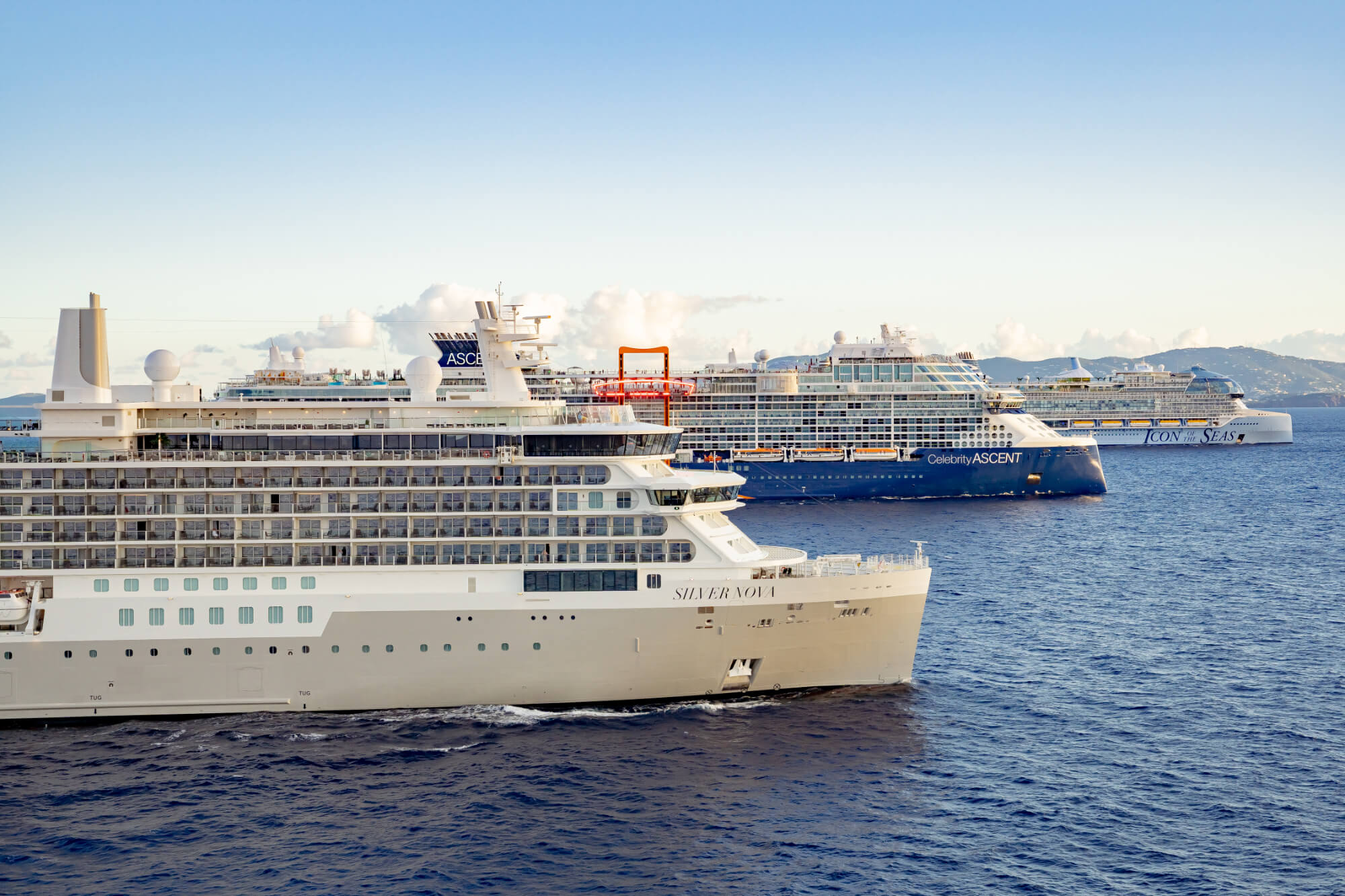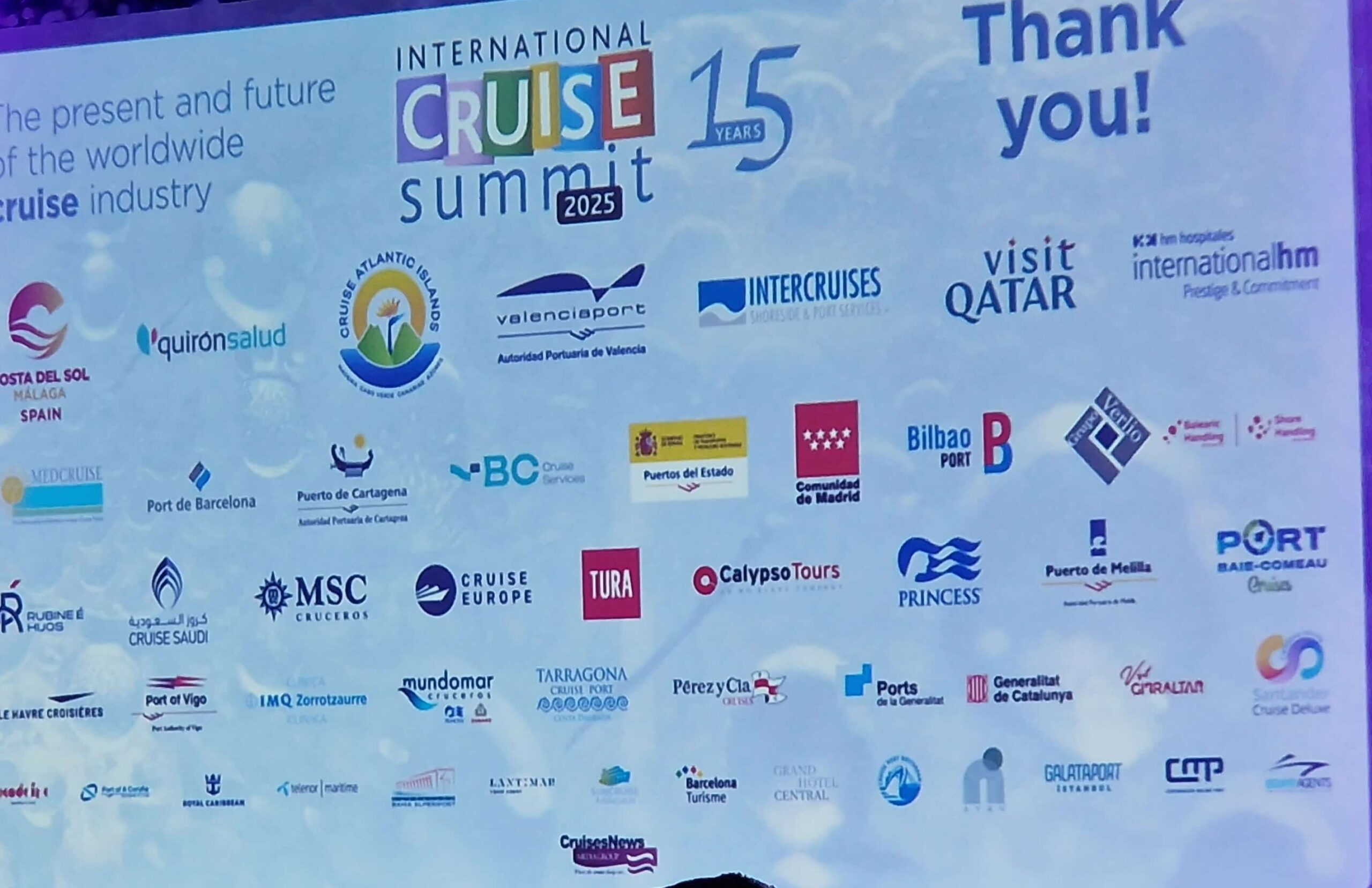
Royal Caribbean International is one of the largest, most well-known, and successful cruise companies in the world. Based in Miami, the company is the top revenue generator in the cruise industry and second in passenger numbers. Although today the brand is synonymous with luxury cruises, its success is the result of a synergy of innovation, courage, and above all, vision.
Founding of the Company
Royal Caribbean was founded in 1968 by Swedish businessmen Andersson, Johnson, and Nystrom under the name Royal Caribbean Cruise Line (RCCL). Their vision was to offer luxury cruises at affordable prices to compete with the already established companies in the market. In 1970, they launched their first ship, the “Song of Norway.” It was the first modern cruise ship with a larger passenger capacity and represented a technological innovation in terms of elegance and comfort.
The Company’s Rise
Throughout the 1970s, Royal Caribbean continued to grow, increasing the capacity and luxury of its ships by introducing innovations like swimming pools, themed restaurants, and various entertainment options. Compared to its competitors, Royal Caribbean focused heavily on service quality, capturing a significant portion of the market, which today accounts for 20% of the global cruise industry. As the fleet grew, new tourist destinations were added, and Royal Caribbean began offering cruises in the Mediterranean and Alaska.
Innovations: The “Quantum” and “Oasis” Ship Classes
One of the most important milestones in the company’s history occurred in 2009 when Royal Caribbean introduced the “Oasis of the Seas,” the first ship in its Oasis class. It was the largest and most luxurious cruise ship in the world, measuring 360 meters in length, 66 meters in width, and with a capacity of 6,000 passengers, accommodating up to 8,000 people with the crew. With a gross tonnage of 226,000 tons, it set new standards for sea travel, winning the hearts of millions of passengers worldwide. The Oasis of the Seas introduced many innovations, including a variety of attractions, parks, marketplaces, and themed restaurants, turning cruising into more than just a journey — it became a mobile city at sea. On board, passengers could enjoy activities such as mini-golf, ice skating, and cycling on the highest deck. For thrill-seekers, there was also a zipline that allowed guests to slide between two decks. The ship also offered a range of themed performances and entertainment programs. The AquaTheater is famous for its spectacular water shows, while Hairspray, a Broadway show, is popular among passengers of all ages. Additionally, the ship offers casinos, nightclubs, cafés, bars, and restaurants with dishes from around the world.

While the Oasis class raised the bar for cruise ship size and passenger numbers, the Quantum class achieved the same for innovations in travel standards. In 2014, Royal Caribbean introduced the “Quantum of the Seas,” a technologically advanced cruise ship featuring smart systems for accessing cabins, robots serving drinks in bars, and virtual balconies in interior cabins. Measuring 348 meters in length, with a gross tonnage of 168,666 tons and a capacity of 5,000 guests, this ship can accommodate up to 6,500 people with its crew.
Today: A Global Leader in the Industry
Being an industry leader means moving boldly forward. Royal Caribbean does this with its Icon class. Icon of the Seas, a $2 billion cruise ship, is the largest cruise ship in the world, built at the Meyer Turku shipyard in Finland. Measuring 365 meters in length, with a gross tonnage of 248,663 tons and 20 decks, it can accommodate up to 7,600 passengers and an additional 2,350 crew members. Onboard, there are facilities that all start with the prefix “largest” — the largest waterfall, the largest aqua park, and many other “biggest” and “best” attractions.
Although the large number of passengers on board might seem crowded, Royal Caribbean has solved these challenges with smart and innovative solutions such as dividing the ship into neighborhoods and using destination-specific elevators.
Today, Royal Caribbean International, together with Celebrity Cruises and Silversea Cruises, is part of the larger Royal Caribbean Group. As a leader in the cruise industry, it boasts a fleet of 26 ships sailing on all continents, dedicated to offering luxurious experiences, innovative amenities, and excellent service. The company has continued to innovate, not only in terms of ships but also with regard to sustainability. Each new ship brings progress in energy efficiency and environmental protection, and Royal Caribbean is committed to achieving net-zero carbon emissions by 2050.
Since its founding in 1968, the company has tirelessly worked to improve its services and offerings, providing passengers with unforgettable experiences at sea. With a focus on luxury, entertainment, safety, and sustainability, Royal Caribbean continues to set high standards for the future of cruising and remains a symbol of innovation in the industry.






